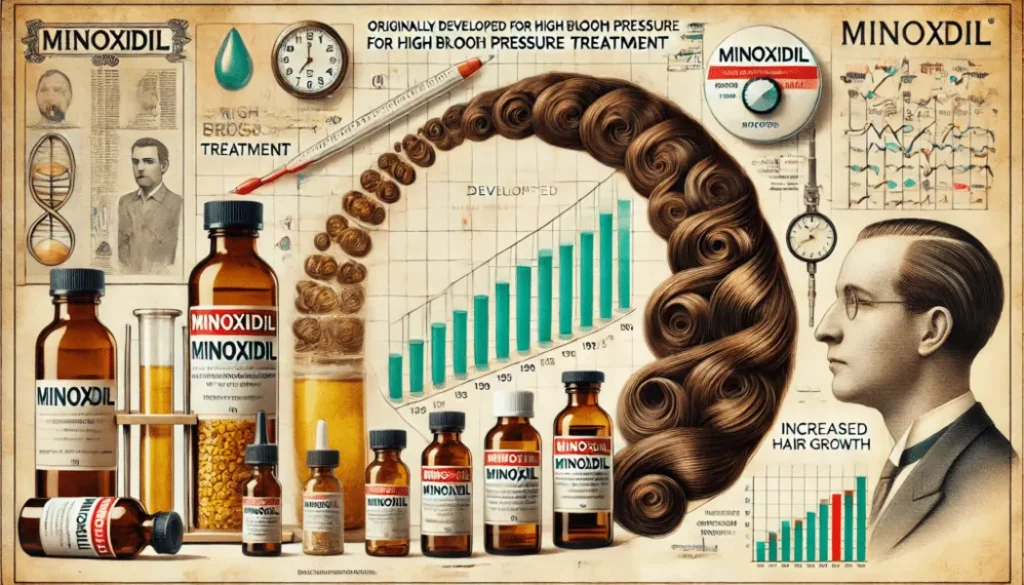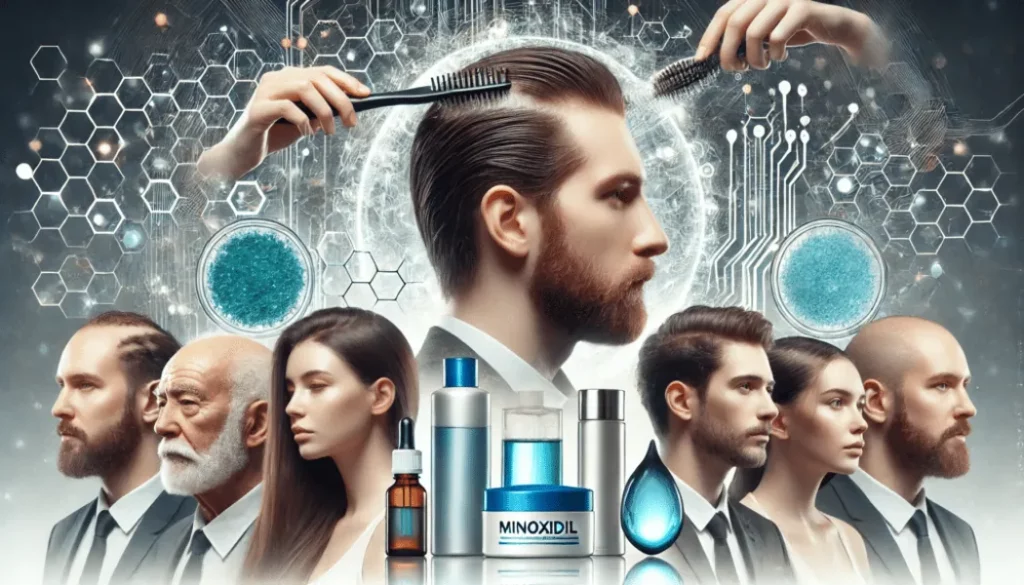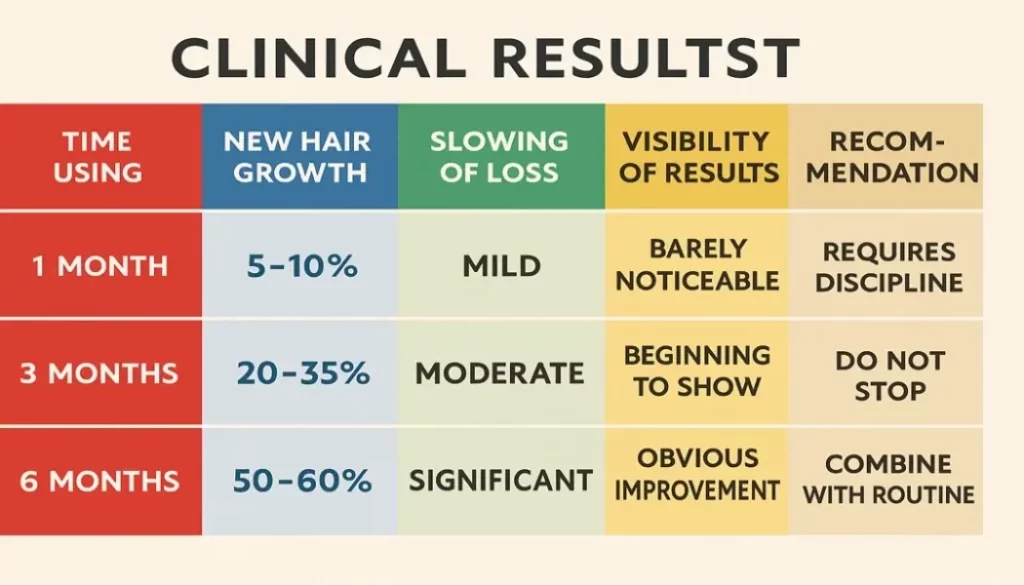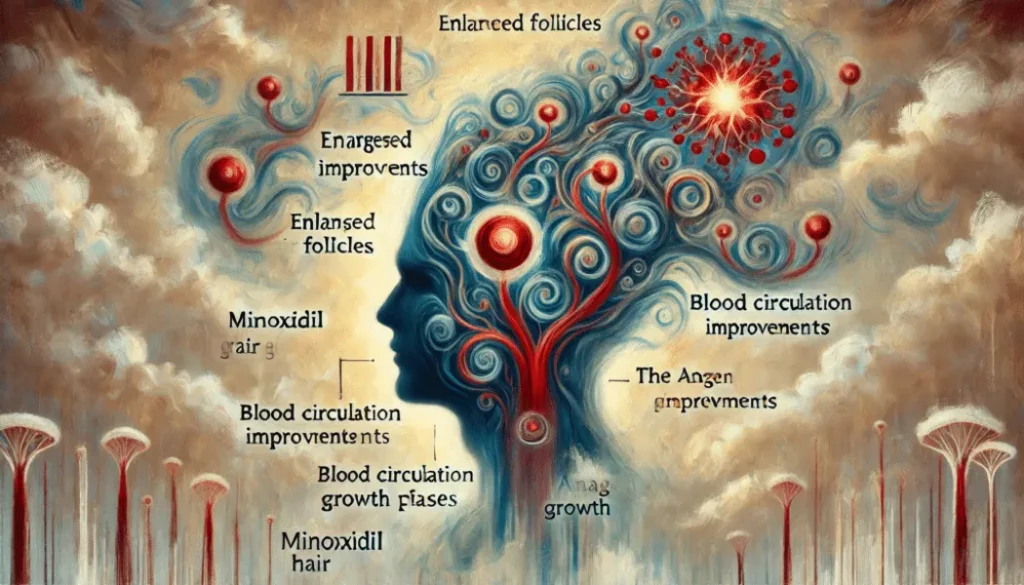What Makes Minoxidil So Effective for Hair Regrowth?
Minoxidil didn’t start out as a hair loss treatment. Originally, it was developed to treat high blood pressure. During its initial use, folks noticed an interesting side effect: increased hair growth. This unexpected benefit quickly turned into a new opportunity, leading to the development of a topical formula specifically for combating hair loss.
Minoxidil’s transformation from a blood pressure drug to a hair growth champion is more than coincidence. Its unique action on hair follicles, especially by increasing blood flow and prolonging the anagen phase, has made it one of the most trusted treatments in hair restoration today.
When it comes to official stamps of approval, Minoxidil hit a major milestone. The U.S. Food and Drug Administration (FDA) gave the green light for its use as a treatment for hair loss quite a few years back. This marked it as a credible option for those struggling with this common issue.

These days, Minoxidil has become a popular name in the world of hair care. It’s known for its accessibility and affordability, offering folks a widely recognized method to tackle hair loss. Available in various forms and concentrations, Minoxidil is now a staple in the hair regrowth toolkit.
For many people, the appeal of Minoxidil lies in its convenience and the body of research supporting its use. It’s become an integral part of countless people’s routines, representing a blend of science and practicality in the battle against hair loss.
Understanding the Science Behind Minoxidil’s Hair Growth Success
Minoxidil isn’t some magic potion; it’s grounded in solid science that explains how it helps hair grow. At the heart of this process is its ability to extend the anagen phase, which is the growth phase of hair. By keeping hair in this phase longer, minoxidil gives your lovely locks more time to grow healthily.

Another key win is its impact on the size of your hair follicles. Basically, larger follicles mean thicker, stronger hair strands. Minoxidil helps by enlarging these follicles over time, which makes an obvious difference in the overall volume and appearance of your hair.
Let’s not forget about blood flow. Healthy circulation is crucial for hair growth, and minoxidil acts as a vasodilator, which means it helps increase blood flow to your scalp. More blood flow means more nutrients and oxygen reaching your hair follicles, giving them what they need to thrive.
It’s this combination of extending the growth phase, increasing follicle size, and boosting blood circulation that makes minoxidil such a success story. So, if you’re considering it, know that its effectiveness is backed by science, not just hearsay.

Analyzing Clinical Evidence and Proven Success Stories
When you dig into the clinical studies surrounding minoxidil, it becomes clear that there’s a wealth of research backing up its efficacy. Numerous trials have shown the ability of minoxidil to significantly improve hair counts in those dealing with hair loss, especially in cases of androgenetic alopecia, which is the most common form of hair thinning.
Research highlights that minoxidil performs well across diverse demographics, offering hope to many regardless of their gender or age. It’s not just theory—real-life examples parallel these findings, with countless users sharing success stories about how minoxidil turned their hair woes around.

Alongside personal testimonials, some studies have indicated the potential of combining minoxidil with other treatments for even better results. For example, when paired with low-level laser therapy, users have reported enhanced hair growth. This complementary combo seems to provide an added boost, making it a compelling option for those seeking maximum benefits.
Beyond the lab results and anecdotes, this growing body of evidence makes a strong case for using minoxidil if you’re struggling with hair loss. Just remember, results can vary, so it’s smart to keep an open mind and maybe explore multi-faceted approaches for the best outcome.
Beyond Minoxidil: Crafting a Comprehensive Hair Care Strategy
While minoxidil is a standout player in the hair regrowth game, taking care of your hair from all angles ensures the best possible outcome. A holistic approach to hair care considers the whole picture, involving lifestyle tweaks, nutritional adjustments, and stress management.
Diet plays a significant role in hair health. Incorporating foods rich in vitamins like Biotin, Vitamin E, and Omega-3 fatty acids can give your hair the nourishment it needs. It’s not just about what you apply topically but also what you’re feeding your body internally.

Certain lifestyle habits can contribute to hair loss, so it’s important to address triggers like excessive alcohol consumption, high stress levels, and exposure to environmental pollutants. Recognizing these factors early on and making conscious changes can support your efforts with minoxidil.
Many folks have questions about minoxidil: “How long until I see results?” or “Is this a permanent solution?” Generally, it can take a few weeks to notice visible changes, and ongoing use is typically necessary to maintain results. It’s crucial to have realistic expectations and understand that while minoxidil can aid in regrowth, it might not completely reverse hair loss.
Ultimately, if you’re considering minoxidil or are already on that path, integrating a comprehensive hair care strategy can optimize your results. By looking at the bigger picture, you’re likely to find a routine that’s both effective and sustainable.

🧴 FAQ – Minoxidil Results, Shedding, and Long-Term Use
🕒 How long does it take to see results with minoxidil?
Most users start noticing less shedding and early regrowth around 8 to 12 weeks, but full results can take 4 to 6 months. Hair grows in cycles, so don’t expect instant miracles — give it time and stay consistent.
🔁 Do I have to use minoxidil forever once I start?
Yes, if you want to maintain results. Minoxidil doesn’t “cure” hair loss — it stimulates follicles. If you stop using it, any new growth usually falls out within a few months. Think of it like watering a plant: stop watering, and the results fade.
💢 Is shedding after starting minoxidil normal?
Yes — and it’s actually a sign it’s working. This “shedding phase” usually happens in the first few weeks, as weaker hairs fall out to make room for stronger ones. It’s temporary and typically resolves within 2 to 6 weeks.
🧾 Last updated: June 2025 based on latest research


Leave a Reply